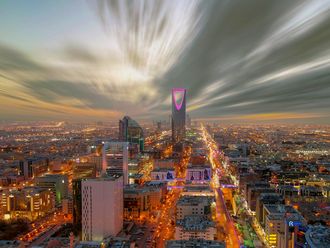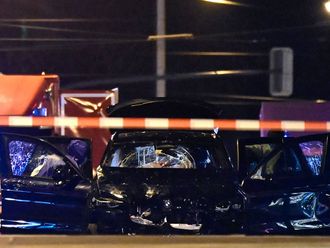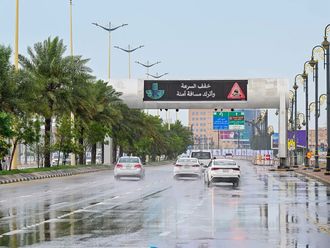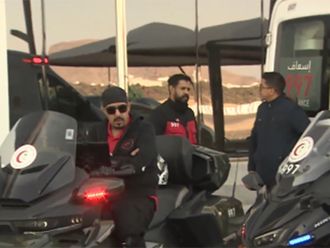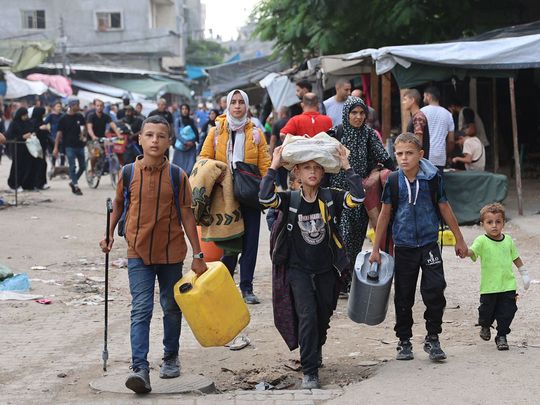
Dubai: Israel’s military operations are intensifying in northern Gaza’s Jabalia, with the Israel Defence Forces (IDF) urging civilians to evacuate and move south.
Reports suggest that Israeli Prime Minister Benjamin Netanyahu’s plan may be the precursor to a contentious plan to seal off humanitarian aid to the region, a strategy aimed at starving out Hamas militants but which could trap hundreds of thousands of Palestinians without food or water.
Jabalia has been the focus of an Israeli offensive for around 10 days and the military has now encircled the camp and sent tanks into nearby Beit Lahiya and Beit Hanoun towns, with the declared aim of stamping out Hamas fighters who are trying to regroup there.
With the Israeli military calling on Palestinians to evacuate south as they step up pressure on Hamas - and Hamas telling them not to leave because it was too risky - the past few days resemble earlier phases of the war.
Also read
- Hezbollah drone attack targets Israel as Gaza siege intensifies
- France's Macron says ending arms exports for Gaza, Lebanon only way to stop fighting
- UN warns against 'catastrophic' regional conflict as Israel urges evacuations in Lebanon and Gaza
- Three Israelis killed, 67 injured in Hezbollah drone attacks
The northern part of Gaza, home to well over half the territory’s 2.3 million people, was heavily bombed in the first phase of Israel’s assault on the territory which began a year ago.
Hundreds of thousands of northern Gaza residents quit their homes in the early months of the war, driven by Israeli evacuation orders and a military ground offensive in their areas, while around 400,000 people remained, according to United Nations estimates.
Developed by retired Major-General Giora Eiland, this plan seeks to clear the area of its 400,000 residents.
Reports indicate that the Netanyahu administration is preparing for the “next phase” of its campaign in Gaza, which could lead to the de facto annexation of territory north of the Netzarim Corridor. Discussions are also underway regarding the possibility of allowing Jewish settlers to establish colonies in northern Gaza, with the settler movement gaining traction since January.
In a televised campaign, Eiland emphasised the urgency of this plan, warning that those who remain could face starvation.
As the military assault on the Jabalia refugee camp began on October 5, the densely populated area has been under siege, leaving tens of thousands without food or water.
Despite efforts to force residents in Jabalia and nearby towns to flee south, many have chosen to remain in their homes, citing the lack of safe zones in Gaza.
The ongoing military operation is expected to last for several months and has already resulted in significant casualties among Palestinian civilians.
Amos Harel, in an analysis for Haaretz, outlined two main objectives: To degrade Hamas’s military networks and to clear the region of its civilian population.
For Jabalia resident Hashim Abu Youssuf Asaliya, the latest fighting has brought only more suffering. “Our life is in despair in Jabalia,” the 70-year-old told AFP.
“Since the war started, we have been displaced 12 times. This is our life.”
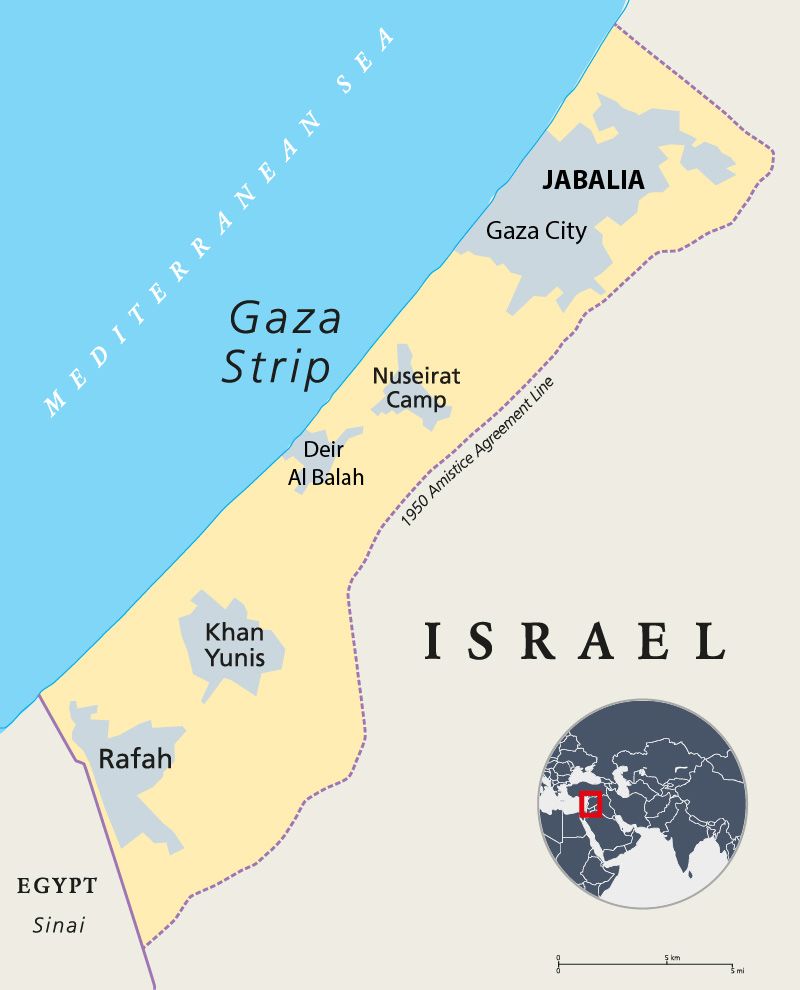
Jabalia refugee camp, located in the northern Gaza Strip, which extends for 1.4km, is one of the largest and most densely populated refugee camps in the region.
Established in 1948, it was created to accommodate Palestinians who were displaced during the Arab-Israeli War and the subsequent establishment of the state of Israel.
Key Historical Points:
CREATION (1948): Following the 1948 Arab-Israeli War, thousands of Palestinians fled or were expelled from their homes. The United Nations Relief and Works Agency (UNRWA) set up Jabalia to provide shelter, food, and basic services to these displaced families.
INITIAL CONDITIONS: The camp started as a series of tents and makeshift shelters. Over the years, it developed into a more permanent community, but living conditions remained challenging, with overcrowding and limited infrastructure.
DEMOGRAPHICS: Jabalia has grown significantly over the decades. As of recent estimates, it houses over 100,000 residents, many of whom are descendants of the original refugees. The camp has a youthful population, with a high proportion of children.
SOCIAL AND ECONOMIC CHALLENGES: Jabalia has faced significant economic hardships, exacerbated by the blockade of Gaza and repeated conflicts. Unemployment rates are high, and access to basic services such as healthcare and education can be limited.
POLITICAL SIGNIFICANCE: The camp has been a site of political activism and resistance. Various Palestinian factions, including Hamas, have a presence there, which has influenced both local dynamics and broader political developments in Gaza.
CONFLICT IMPACT: Jabalia has been affected by several conflicts, including the Gaza Wars in 2008-2009, 2012, 2014, and the present more than a year of war resulting in destruction, casualties, and displacement within the camp itself.
Closed roads prevent aid deliveries
Israel has issued many evacuation orders for the north throughout the yearlong war, the most recent of which was Sunday.
The military’s latest offensive in northern Gaza has caused more suffering for hundreds of thousands of trapped people, according to the UN agency for Palestinian refugees, UNRWA.
Vast areas of Gaza have been devastated by Israel’s retaliatory assault on the territory after the October 7 Hamas attack on Israel last year that sparked the war.
Since the Jabalia operation began, residents, health care officials and emergency responders said intense shelling and closed roads have prevented aid deliveries, choking off vital supplies to medical facilities.
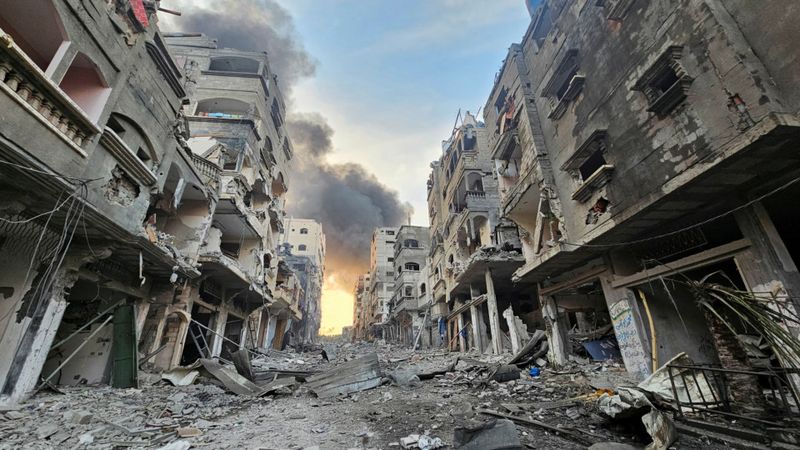
“We are under Israeli siege,” Hussam Abu Safiya, director of Kamal Adwan Hospital in Jabalia, told AFP.
The hospital has just days’ worth of fuel needed to power the facility and medical staff are “exhausted with very few doctors available”, he said.
“We are suffering from a blockade on food, medicine, medical supplies and even fuel coming from the south to the north.”
The plan proposed to Netanyahu and the Israeli parliament by a group of retired generals would escalate the pressure, giving Palestinians a week to leave the northern third of the Gaza Strip, including Gaza City, before declaring it a closed military zone.
Palestinian activist Ahmed Hijazi shared a video on the platform X, detailing “dozens of corpses and martyrs in the streets,” and lamenting the lack of ambulances and hospitals due to the ongoing siege.
In response to the crisis, users in northern Gaza have been using the Arabic hashtag ‘Jabalia is being annihilated’ to raise awareness. One post starkly stated, “Body parts with no graves, wounded people with no hospitals, starving people with no food.”
Another user emphasized, “This is a war specifically against Jabalia, distinct from the conflict affecting the rest of Gaza. It feels like an act of revenge against residents who oppose forced displacement. They want to ensure we cannot leave for the south; their sole objective is our destruction.”

Those who remain will be considered combatants
Those who remain would be considered combatants — meaning military regulations would allow troops to kill them — and denied food, water, medicine and fuel, according to a copy of the plan given to The Associated Press by its chief architect, who says the plan is the only way to break Hamas in the north and pressure it to release the remaining hostages.
The plan calls for Israel to maintain control over the north for an indefinite period to attempt to create a new administration without Hamas, splitting the Gaza Strip in two.

There has been no decision by the government to fully carry out the so-called “Generals’ Plan,” and it is unclear how strongly it’s being considered.
Asked if the evacuation orders in northern Gaza marked the first stages of the “Generals’ Plan,” Israeli military spokesperson Lt. Col. Nadav Shoshani said no.
“We have not received a plan like that,” he added.
Parts of the plan already implemented
But one official with knowledge of the matter said parts of the plan are already being implemented, without specifying which parts.
A second official, who is Israeli, said Netanyahu “had read and studied” the plan, “like many plans that have reached him throughout the war,” but didn’t say whether any of it had been adopted.

Food as a weapon: A humanitarian crisis unfolds
On Sunday, Israel launched an offensive against Hamas fighters in the Jabalia refugee camp, located north of Gaza City. Since September 30, no trucks carrying food, water, or medical supplies have entered the area, according to the UN and the Israeli military agency overseeing humanitarian aid.
Human rights groups warn that this strategy could starve civilians, violating international law that prohibits using food as a weapon.
Accusations of intentionally limiting food supplies are central to the genocide case against Israel at the International Court of Justice, which Israel denies. So far, few Palestinians have responded to evacuation orders. Many are older, sick, or afraid to leave, while others believe there is no safe destination and fear they won’t be allowed to return.
“All Gazans are afraid of the plan,” said Jomana Elkhalili, a 26-year-old aid worker.
“Still, they will not flee... It’s better to die than to leave.” Human rights advocates criticise the plan for suggesting that those who refuse to evacuate become legitimate military targets. Eiland’s strategy could potentially extend beyond northern Gaza, impacting tent camps further south.
US State Department spokesperson Matthew Miller emphasised that the US opposes any direct Israeli occupation of Gaza, reflecting a near-unanimous sentiment in the international community.
As conditions worsen, Philippe Lazzarini, head of the UN agency for Palestinian refugees, reported that around 400,000 people are trapped in northern Gaza, with hunger rapidly spreading due to a lack of basic supplies. Roads between Gaza City and northern areas have been cut off, making escape increasingly difficult.






